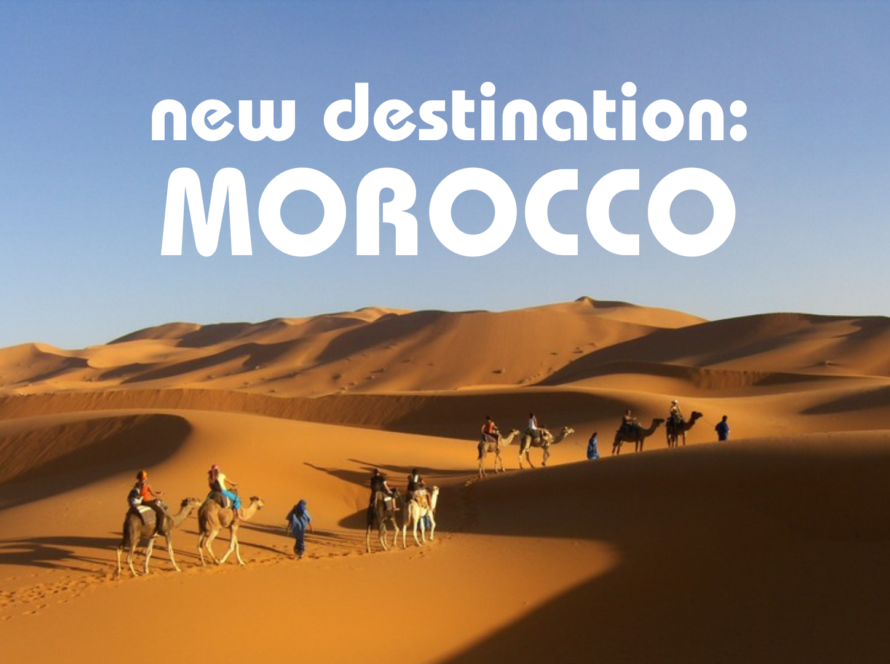Moroccan cuisine is a feast for the senses, known for its bold flavors, vibrant colors, and aromatic spices. With influences from Berber, Arab, French, and Mediterranean cultures, Morocco’s gastronomy is a perfect reflection of its rich history and diverse geography.
In this blog, we will explore the origins, ingredients, famous dishes, seasonal specialties, and the wonderful world of Moroccan desserts and drinks.
A mix of cultures: the origins of Moroccan cuisine
Moroccan cuisine is a beautiful fusion of several cultures.
The Berbers, who were the earliest inhabitants of Morocco, laid the foundation for the country’s traditional cooking, introducing staple dishes like couscous and tagine.
Later, Arab invaders brought a range of spices like saffron, cinnamon, and cumin, which continue to play a central role in Moroccan dishes today.
French colonial influence introduced modern cooking techniques, while Mediterranean ingredients like olives, figs, and lemons were woven into the culinary fabric of Morocco. This blend of flavors makes Moroccan food truly unique.
Signature Moroccan dishes: a culinary top list






1. Couscous
Perhaps the most iconic Moroccan dish, couscous is traditionally made from semolina wheat. It is often served with a stew of meat (usually lamb or chicken), vegetables, and a flavorful broth. Couscous is also popular on Fridays, considered a sacred meal day in Morocco.
2. Tagine
Named after the earthenware pot in which it’s cooked, tagine is a slow-cooked stew of meat, poultry, or fish combined with vegetables or dried fruits like apricots and prunes. The dish is seasoned with a mix of spices such as cumin, coriander, turmeric, and cinnamon, creating layers of complex flavors.
3. Pastilla
Pastilla (or bastilla) is a savory-sweet pie, traditionally made with pigeon meat (but often replaced with chicken), layered with eggs, spiced almonds, and encased in thin, crispy pastry. It is dusted with powdered sugar and cinnamon, creating a perfect balance of savory and sweet flavors.
4. Harira
A beloved Moroccan soup, harira is typically enjoyed during Ramadan to break the fast. It is made with tomatoes, lentils, chickpeas, and lamb, spiced with ginger, turmeric, and saffron. This hearty soup is rich in nutrients and flavor, providing a wholesome meal.
5. Zaalouk
Zaalouk is a popular side dish made from roasted eggplants and tomatoes, flavored with garlic, olive oil, cumin, and paprika. It’s often served as a dip with bread, and its smoky, spicy flavor is a delicious accompaniment to any meal.
Key ingredients in Moroccan cooking
The richness of Moroccan food comes from its use of fresh, local ingredients. Some key ingredients include:
- Spices: saffron, cumin, cinnamon, turmeric, and ginger.
- Citrus: lemons, particularly preserved lemons, are a cornerstone of many Moroccan dishes.
- Dried fruits: apricots, raisins, prunes, and figs add a natural sweetness.
- Nuts: almonds, pine nuts, and walnuts often add crunch to both savory and sweet dishes.
- Olives and olive oil: a Mediterranean influence, olives and olive oil are heavily used in cooking and as a garnish.



Seasonality and freshness
Moroccan cuisine focuses heavily on seasonality and freshness. Vegetables and fruits are sourced locally and are often used in their prime season.
In the summer months, lighter dishes with fresh vegetables and fruits are popular, while heavier stews and slow-cooked meats dominate the winter table.
Couscous and tagine can be changed based on what’s available seasonally, making them key dishes in Moroccan homes.
Moroccan sweets and desserts

Moroccan desserts are often characterized by the use of honey, almonds, and orange blossom water. Some popular choices include:
1. M’hanncha
Also known as “snake cake” due to its spiral shape, M’hanncha is made from layers of filo pastry stuffed with almond paste and flavored with orange blossom water.
2. Chebakia
A sesame cookie deep-fried and soaked in honey, Chebakia is traditionally served during Ramadan. It’s a sweet, crunchy treat perfect for accompanying mint tea.
3. Kaab el Ghazal
Also called “gazelle horns,” these crescent-shaped cookies are filled with almond paste and flavored with orange blossom water.
Traditional Moroccan drinks



1. Moroccan mint tea
Mint tea, or “atay,” is Morocco’s most iconic drink. Made with green tea, fresh mint leaves, and plenty of sugar, this tea is served throughout the day and is a symbol of hospitality.
2. Almond milk
A popular and refreshing drink, Moroccan almond milk is often flavored with orange blossom water or cinnamon, offering a creamy, nutty flavor.
3. Freshly squeezed juices
During the hotter months, fresh fruit juices made from oranges, pomegranates, or melons are commonly enjoyed. They provide a refreshing and healthy beverage option.
Influences from other cultures

Morocco’s culinary heritage has been shaped by its interactions with other cultures.
Arab invasions brought spices, the French colonial era influenced baking techniques, and the Mediterranean trade introduced olives and seafood.
The Jewish community in Morocco also contributed to the rich variety of preserved foods and pastries.
This blend of influences gives Moroccan food its distinctive and diverse character.
Health benefits of Moroccan cuisine
Moroccan food offers a range of health benefits due to its use of fresh vegetables, lean proteins, whole grains, and anti-inflammatory spices. Dishes like tagine and couscous are nutrient-dense, providing a good balance of fiber, protein, and essential vitamins.
The use of spices like turmeric and cumin is known to support digestion and have antioxidant properties, while fresh mint used in tea helps with digestion and provides a calming effect.
As you can see, the Moroccan gastronomy is more than just food—it’s an experience that brings together the rich history, diverse cultures, and vibrant flavors of the country. From the hearty tagines and aromatic spices to the sweet, delicate desserts, Morocco’s culinary landscape offers something for every palate.
Whether you’re enjoying a cup of mint tea or savoring a traditional dish like couscous, Moroccan cuisine is a delightful journey of flavors and traditions.
Explore the world of Moroccan food, and you’ll discover why it remains one of the most celebrated and flavorful cuisines in the world.
Get in touch with us to discover all that Morocco has to offer!




